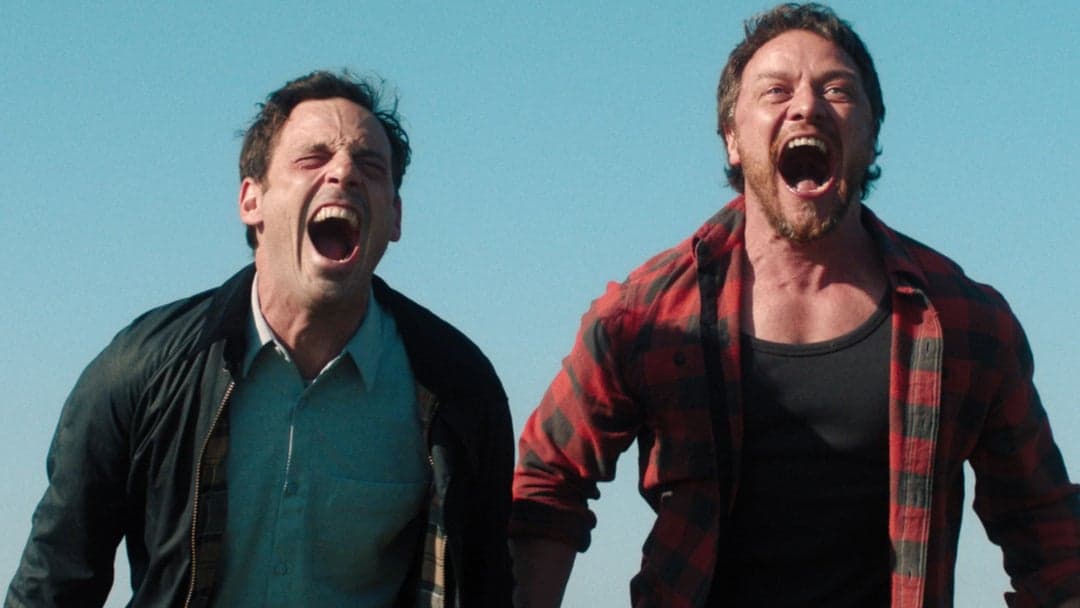Credit: Universal
“Speak No Evil” brings a new spin to the horror genre. This 2024 remake of a Danish thriller puts a unique twist on the original story.
The film follows Ben and Louise Dalton, an American couple living in London. They meet Paddy and Ciara, a British couple, while on vacation in Italy.
The Daltons later visit their new friends at their farm in the West Country.
The movie explores themes of politeness, cultural differences, and the struggle to speak up in uncomfortable situations. It plays with audience expectations, making viewers question why characters don’t simply leave when things get weird.
James McAvoy stands out as Paddy, bringing charm and menace to his role. Scoot McNairy and Mackenzie Davis play Ben and Louise, a couple dealing with past hurts and current frustrations. Aisling Franciosi rounds out the main cast as Ciara, Paddy’s wife.
The film takes some departures from its source material:
- Setting moves from Denmark/Netherlands to UK
- More focus on character backstories
- Addition of action scenes
- Different ending
These changes give the remake its own flavor. While some fans of the original might miss its darker tone, the new version offers more laughs mixed with the scares.
The story touches on issues like:
- Culture shock
- Marriage problems
- Job loss
- Parenting worries
By fleshing out the characters’ lives, the film creates more relatable leads. This helps viewers connect with Ben and Louise, even when their choices seem questionable.
“Speak No Evil” plays with ideas of masculinity and social expectations. Ben feels less manly after losing his job. Paddy seems to represent a more confident, traditional male role. This dynamic adds tension to their interactions.
The children in the story, Agnes and Ant, play important parts. Their friendship drives some plot points, though at times it stretches believability. The movie sometimes relies too heavily on the kids to move the story along.
Class differences come into play in this version. The American couple’s attempt to fit in with their British hosts creates awkward moments. These scenes highlight the social pressures people face when trying to make a good impression.
The film keeps viewers guessing about Paddy and Ciara’s true nature. Are they just eccentric? Or is something more sinister going on? This uncertainty builds suspense throughout the story.
“Speak No Evil” balances horror with dark comedy. It pokes fun at social niceties and the lengths people go to avoid conflict. This lighter touch sets it apart from the original’s grimmer outlook.
The movie’s pacing allows time for character development. Viewers get to know the Daltons and their problems before the main action kicks in. This setup makes their later choices more understandable, if not always smart.
Visual contrasts play a big role in the film:
- Cozy farm setting vs growing unease
- Warm Italian vacation vs cold British countryside
- Outward politeness vs inner discomfort
These elements create a unsettling atmosphere that builds as the story progresses.
“Speak No Evil” takes risks by changing key aspects of the original film. It aims for a broader audience with its mix of thrills and laughs. While purists might prefer the Danish version, this remake offers its own take on the concept.
The movie raises questions about how well we really know new friends. It explores the line between being polite and being a pushover. These themes will likely spark discussions among viewers after the credits roll.
With strong performances and a fresh approach, “Speak No Evil” carves out its own space in the horror genre. It may not be as bleak as its predecessor, but it offers plenty of chills and surprises along the way.




